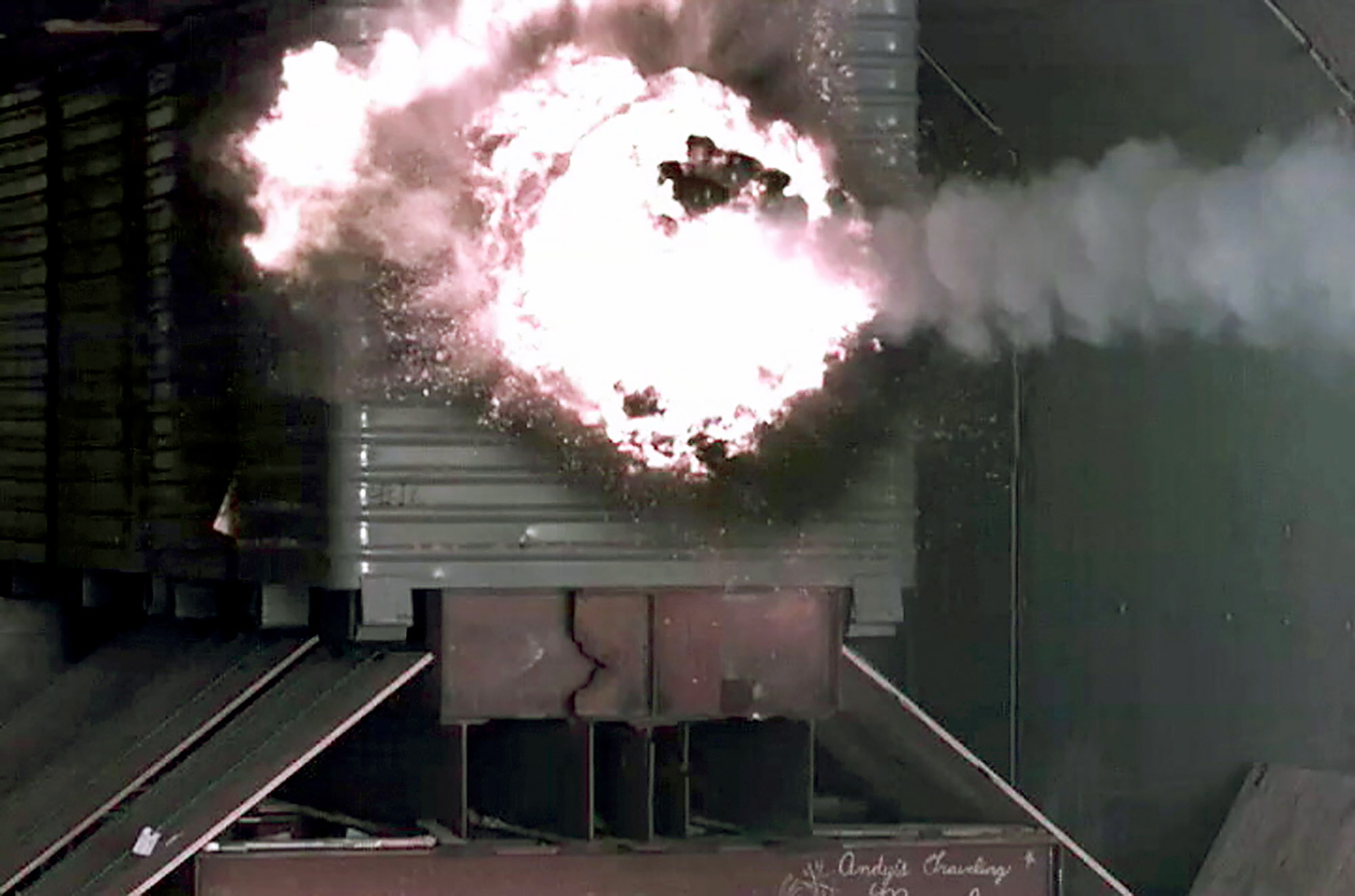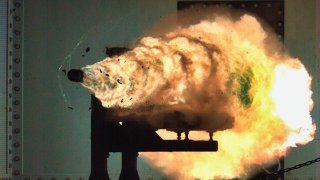The U.S. Military Is Freaked: China Has a Railgun
China's advancements in military technology, particularly in railgun development, reflect its shift from imitation to innovation. While the U.S. has struggled with its railgun program, China has used artificial intelligence (AI) to overcome technical challenges, advancing their capability to fire projectiles at hypersonic speeds.
What You Need to Know: China's advancements in military technology, particularly in railgun development, reflect its shift from imitation to innovation. While the U.S. has struggled with its railgun program, China has used artificial intelligence (AI) to overcome technical challenges, advancing their capability to fire projectiles at hypersonic speeds.

-This progress could significantly alter naval warfare dynamics, with China preparing to deploy railguns at sea.
-Interestingly, China's primary concern isn't the U.S. but Japan, which has also made strides in railgun technology. With China focusing on these high-tech innovations, its military power continues to grow, challenging both regional and global competitors.
China and Railgun Technology: A Game Changer
“China is an imitator, not an innovator,” is a common refrain one hears from so-called foreign policy experts in Washington, D.C. Another one is that “China manipulates” its scientific research data.
Yet, these claims rarely match the reality in China today.
These accusations were true twenty years ago. In some cases, they may have been true even a decade ago. But just look at even mid-tier Chinese cities, like Shenzhen, the hub of China’s cellular communication innovation cluster. It’s an impressive modern city producing fifth-generation (5G) and now, sixth-generation (6G) internet. Whatever else is going on within China’s economic and political system, their high-tech innovation clusters, once imitation clusters, are real challengers to Western dominance in the high-tech domains.
In the past decade, China has become a dominant player in the quantum computing revolution, it has pioneered advanced biotechnology innovations, China leads the United States in hypersonic weapons, the “Middle Kingdom” is leading in the development of global infrastructure supporting 5G and 6G internet, it is competing with the Americans in the development of metamaterials, and these are only just some of the technological domains where China is making real headway about their Western rivals.
What’s more, China is starting to innovate in weapons capabilities. Not only have they moved ahead of the Americans in the practical use of hypersonic weapons, but China is developing potentially game-changing defenses against incoming hypersonic weapons of the kind that the Americans might use against them in a potential war. Chinese scientists are creating unique propulsion systems for their next-generation submarines that might outstrip what the Americans possess.
The West Isn’t Making the Cut
Many in the West might attempt to downplay these designs. After all, many of these technologies have already been investigated by Western scientists.
For example, hypersonic weapons have been on the minds of most American scientists for decades. It’s just that the Pentagon, despite its vast wealth, has lacked focus. And because it has lacked focus on these next-level innovations, they’ve left the field wide open to China’s military scientists, who are dutifully exploiting such listlessness from American scientists.
China is also apparently leading in practical military applications of artificial intelligence (AI). This is important because AI could conceivably, in China’s case, help Chinese scientists develop next-generation weapons at a faster clip than can the Americans. Indeed, this has been the case with the development of China’s railgun technology. A railgun is simply a weapon that uses electromagnetic force to rapidly launch projectiles at targets at fast speeds.
The United States Navy has been invested in developing this technology for years. Recently, the Pentagon abandoned the program because, after vast sums of money were spent by the Navy on it, they could not make it work. The Chinese, too, have struggled to make their railgun work. But they’re farther ahead than the ambivalent Americans and their investment is paying off in other ways.
China Used AI to Develop Their Railgun
Specifically, in the use of AI to perfect the development of their railgun. Earlier this year, for example, Chinese scientists were able to determine why one of their long-range tests of the railgun worked thanks to the use of AI tools to help them resolve the problem.
The lessons learned from that experience were applied to the further development of the system. Deploying the railgun at sea, being able to fire a projectile at Mach five, with a maximum height of nine miles into the stratosphere reliably will lead to a massive shift in the balance of power in any future engagement between the Chinese and American navies.
China Isn’t Even Worried About America. They Fear Japan
Interestingly, the Chinese might not even be developing the railgun as a response to the floundering efforts of Uncle Sam’s railgun program. Undoubtedly, the single greatest regional military challenge that China faces comes from neighboring Japan. The Japanese Maritime Self-Defense Forces successfully tested a medium-caliber maritime railgun. It will now be deployed aboard Japan’s 13DDX Destroyers, complicating the Chinese strategic posture in the region.
China has little incentive to abandon its pursuit of high-tech weapons. With each successful innovation, China’s war machine grows more powerful, especially relative to the power of the U.S. military. And because local actors, like Japan, becoming more threatening militarily to China, Beijing will continue to push the development of these incredible technologies even as the Americans fail to adapt.
Author Experience and Expertise: Brandon J. Weichert
Brandon J. Weichert, a National Interest national security analyst, is a former Congressional staffer and geopolitical analyst who is a contributor at The Washington Times, the Asia Times, and The-Pipeline. He is the author of Winning Space: How America Remains a Superpower, Biohacked: China’s Race to Control Life, and The Shadow War: Iran’s Quest for Supremacy. His next book, A Disaster of Our Own Making: How the West Lost Ukraine, is due October 22 from Encounter Books. Weichert can be followed via Twitter @WeTheBrandon.
All images on the page come from Shutterstock or Creative Commons.
From the Vault
Russia Freaked Out: Why the U.S. Navy 'Unretired' the Iowa-Class Battleships
Battleship vs. Battlecruiser: Iowa-Class vs. Russia's Kirov-Class (Who Wins?)


